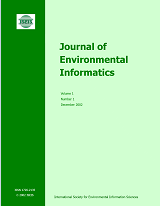doi:10.3808/jei.201500327
Copyright © 2024 ISEIS. All rights reserved
A Hierarchical Approach for Inland Lake Pollutant Load Allocation: A Case Study in Tangxun Lake Basin, Wuhan, China
Abstract
Water pollution control is a challenging task in water resources management. It is widely believed that integrating efficiency and fairness of socio-economic factors is an effective solution for water problems of inland Lake Basin. In this paper, a hierarchical approach of Tri-level Pollutant Loading Allocation (TPLA) was developed for the optimal allocation of pollutant load reduction. In TPLA, pollutant load reduction amount were allocated top-down, from basin scale to outlet scale, in three levels based on minimum marginal cost, Environmental Gini Coefficient (EGC) and water quality modeling to meet the set water quality goal. Tangxun Lake Basin, Wuhan, Central China, was selected as a case study. Results showed that the total CODMn loads reduction of point sources and non-point sources was allocated to 201.1 t/a and 24.1 t/a, respectively at the first level. Secondly, the districts within the lake basin are to cut off emission amount to different extent by minimizing EGC population to 0.22 and EGCIAV to 0.50. Minimum EGC method seems more adaptable to solve the inequality between pollution and population than that of industrial added value. At the third level, the largest reduction amount of 142.21 t/a was at Bee Jiaotou Plant outlet at Miaoshan District, followed by two outlets of 10.41 t/a in Zhifang District. Other outlets cut their emission by less than 10 t/a. The TPLA model can give an optimal pollutant loads allocation for the various pollutant sources, and is easy to understand for stakeholders and flexible to apply in practice.
Keywords: hierarchical approach, pollutant load allocation, total pollutant control, lake basin, Tangxun Lake
Supplementary Files:
Refbacks
- There are currently no refbacks.
